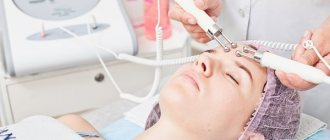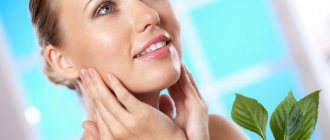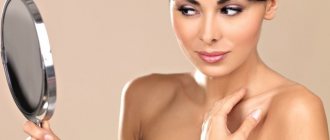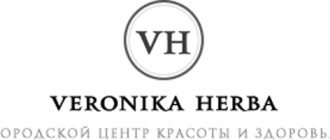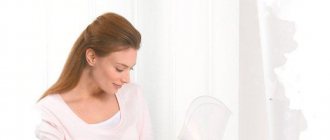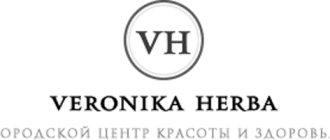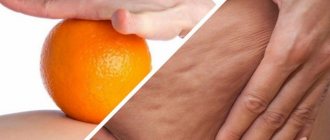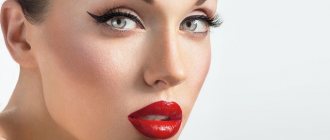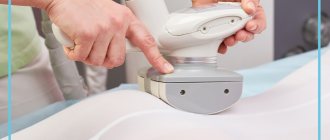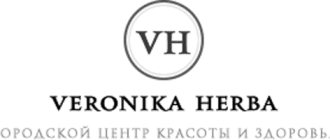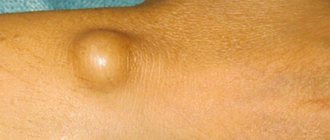Consultation Services Doctors Results Reviews
Expert tested
Natalya Borisovna Zhmurina Director, Chief Physician of “A Clinic” Dermatovenereologist, cosmetologist
Publication date: November 07, 2022
Review date: November 24, 2022
Photorejuvenation is a highly effective hardware technique that helps accelerate cell regeneration and increase collagen production. After the procedure, the skin will look young and fresh for 2-3 years.
Most often, this technology is used when it is necessary to remove age spots, vascular manifestations on the skin, narrow pores, even out complexion and increase skin elasticity. This happens using light waves of different lengths and high intensity.
How the procedure works
This technique allows you to quickly, effectively and comfortably hide the signs of aging. It is based on the effect of pulsed light emitted by a special device on the superficial and deep layers of the dermis. The length of the light wave, as well as the intensity and duration of exposure to radiation, are selected individually by a cosmetologist and depend on the type and severity of skin defects.
At the end of the light exposure, a thin layer of cream is applied to the skin to activate the recovery process. In addition, it protects the radiation-exposed areas from the sun and other negative natural factors, which are quite sensitive immediately after the procedure.
The first results will be noticeable after the first session. If you want to achieve maximum and lasting results, you will need at least 4-5 procedures with an interval of 2-4 weeks. The cosmetologist determines the required number and frequency of therapy sessions on an individual basis.
Phototherapy of the skin can and in some cases even needs to be combined with other cosmetic procedures aimed at improving and preventing aging of the facial skin - all kinds of peelings, injections of hyaluronic acid and vitamin cocktail, mesotherapy, etc.
The difference between phototherapy and laser therapy
Many patients do not see the difference between therapy using the Lumenis M22 IPL device and the Lutronic eCO2 laser, although these are radically different methods for eliminating age-related changes.
Phototherapy requires more fine-tuning, unlike fractional laser rejuvenation. When performing photorejuvenation, a cosmetologist can independently select the depth and intensity of exposure to light rays. Also, taking into account the characteristics of the patient’s skin, the maximum value of the flash energy, the number of pulses and intervals between them, and the duration of exposure to one flash are set.
IPL rays are used in another popular cosmetic procedure - photoepilation.
Stages of implementation
Before a phototherapy session, the general state of health must be assessed. This is necessary to identify the full range of indications and possible contraindications to the use of this technique. In the absence of the latter, the cosmetologist begins to perform manipulations.
Skin phototherapy is carried out in 4 stages:
1. The specialist applies a gel to the areas exposed to radiation, which protects the skin and soft tissues from overheating.
2. The patient puts on special tinted glasses to protect the eyes from the bright light generated by the device.
3. The cosmetologist acts on problem areas with pulsed light.
4. At the end of the procedure, the specialist applies a special cream to the skin, which promotes rapid healing and restoration of the skin.
The duration of the session is no more than half an hour, on average - 7-9 minutes.
How is photorejuvenation performed?
The essence of the technique is to activate restoration processes in tissues, which is achieved using intense pulsed light (IPL - Intensive Pulsed Light). During the procedure, a special device treats each problem area.
Photorejuvenation is very effective in removing all kinds of age spots. They are formed when melanocyte cells in certain areas of the skin begin to produce too much of the natural pigment, melanin. It is responsible for coloring human skin, hair, and irises. The higher the concentration of melanin, the darker the color becomes. At a young age, the pigment is formed under the influence of bright sunlight. Thus, our body is protected from ultraviolet radiation.
But at a more mature age, hyperpigmentation may already appear, which is a consequence of the thinning of the basement membrane, which separates the epidermis (upper layer of skin) from the dermis (underlying layer of skin). As a result, the pigment embedded in the deep layers of the skin begins to appear on the surface, unevenly forming age spots.
During the removal of pigment spots, a cooling gel is applied to the treated surface, and a light pulse is passed through it. This is necessary for the correct exposure of the light beam to the spot. The target for the beam is precisely the pigment melanin. As a result, the pigment spot first darkens and then disappears, and the skin color evens out.
Photorejuvenation is no less successful in treating vascular manifestations. Skin cells contain the protein hemoglobin. It is responsible for delivering oxygen to cells. When a capillary vessel expands, hemoglobin stagnates in it. Such congestion appears on the skin in the form of spider veins. If the star is located deep enough, then it shines through the skin with a blue tint, and if close to the surface of the skin, then red.
During photorejuvenation, light beams are directed at vascular formations, as a result of which stagnant hemoglobin is destroyed (collapses) and the vascular pattern disappears. It is also possible to remove unnecessary tattoos, especially if red ink was previously used when applying the tattoo.
During the procedure, a gentle warming of the skin occurs at the same time, as light energy is transformed into heat. Such heating has a very beneficial effect, as it activates the synthesis of collagen fibers. As a result, the skin becomes more elastic and smooth, wrinkles are smoothed out, and acquires a healthy shade.
Indications and contraindications
Any intervention, including even such gentle and proven cosmetological techniques as skin phototherapy, is associated with a certain health risk.
The main conditions for which the use of this technique is indicated
- acne;
- congenital and acquired age spots;
- freckles;
- age-related skin changes (wrinkles, sagging, decreased tone);
- spider veins (dilated capillaries);
- very dry skin;
- uneven skin color;
Before the procedure, a detailed consultation is carried out, during which the patient is informed of the possible risks
Main contraindications to skin phototherapy:
- age less than 16 years due to hormonal instability in adolescents;
- pregnancy and lactation;
- fresh tan obtained naturally or by regularly visiting the solarium for 3 months;
- glaucoma, cataracts and other intractable and chronic diseases of the visual organs;
- allergic dermatitis, psoriasis and other chronic infectious and inflammatory skin diseases;
- mental disorders;
- taking antibiotics;
- oncology;
- acute or chronic hypertension (grade IIa and above), heart failure;
- diseases of the thyroid gland and changes in thyroid background.
It is extremely important to tell your cosmetologist about any acute and chronic diseases that can, at a minimum, reduce the effectiveness of the procedure, or, at a maximum, cause serious side effects.
Result
After a course of photorejuvenation, pigment spots, acne, acne, capillary networks go away, complexion and skin turgor improve, and in the long term, epidermal cells are renewed.
However, it should be understood that with the help of phototherapy it will not be possible to lift the skin, restore the volume of the cheekbones lost with age, eliminate deep nasolacrimal and nasolabial folds, gravitational ptosis and “jowls”. Also, during photorejuvenation, the areas around the eyes are not affected due to the risk of corneal burns. If these areas require additional attention, you should choose a different treatment method.
Advantages and disadvantages
Compared to most other cosmetic procedures of a similar nature, skin phototherapy allows you to get rid of many skin defects with a minimum number of side effects.
Its main advantages:
- minimal trauma;
- absence of scars after exposure;
- complete skin restoration within 3 days (in most cases);
- high performance;
- absence of unpleasant sensations during the session and after;
- pronounced effect that lasts for 3-5 years;
- the ability to lead a normal lifestyle immediately after the session without limiting social contacts.
The list of shortcomings is insignificant, especially in light of the above advantages. These include:
- short-term and mild discomfort immediately after the session, expressed in swelling, hyperemia, slight itching
- ban on the use of decorative cosmetics for 3-5 days;
- low likelihood of developing photodermatosis and skin hypersensitivity
FAQ
Question: How many photorejuvenation procedures are required?
Answer: For most people, 3-7 sessions of facial photorejuvenation are enough to get the maximum possible effect from this procedure. However, only your cosmetologist will determine the exact number of procedures.
Question: How often can photorejuvenation be done?
Answer: The break between sessions is usually 7-10 days. It is advisable to carry out the procedure itself once a year - or as recommended by a doctor.
Question: How will you feel during the procedure?
Answer: During the procedure, you may feel warmth and slight tingling of the skin. Special pads protect your eyes from light flashes. The session lasts for half an hour.
Question: How long does it take to notice the first effect?
Answer: Already the first photorejuvenation procedure will give an effect, and subsequent ones will consolidate the result for a long time. A full course usually consists of 3-7 sessions, the number of which varies individually. It depends on the condition of the patient’s body and the effect you want to achieve.
Question: How long will the effect last?
Answer: Photorejuvenation is a highly effective procedure. After completing the full course, the effect lasts for 2-3 years.
Question: Is it possible to do photorejuvenation for teenagers to cope with acne or freckles?
Answer: Yes, photorejuvenation can be done even for young patients who develop acne and enlarged pores during hormonal changes in the body. Exposure to light will dry out the skin and smooth out any unevenness. The light exposure technique will also get rid of freckles if they cause aesthetic discomfort.
Question: Is photorejuvenation really capable of permanentizing the effect of Botox?
Answer: Photorejuvenation does not affect the effect of botulinum therapy in any way - it neither weakens nor enhances it.
Does photorejuvenation help get rid of acne?
Pimples (acne) are an inflammatory lesion of the skin that develops as a result of damage to the sebaceous glands and hair follicles. The pathology has a polyetiological structure; its occurrence is provoked by the following factors:
- excessive secretion of sebum - a favorable environment for the development of bacterial flora;
- disruptions in the endocrine system
- individual genetic characteristics;
- climate specifics (increased dryness or, conversely, atmospheric air humidity).
Phototherapy of the facial skin does not regulate the secretion of sebum, but it can somewhat reduce its amount and destroy pathogens in soft tissues. Any inflammation in the areas of intended impact is an absolute contraindication to the procedure.
PHOTO REJUVENATION and Pigment spot removal.
The list below shows the most common areas that can be treated and show good results.
- Facial photorejuvenation
- face+neck
- face+cleavage
- face+neck+décolleté
- neck+décolleté
- hands
For a more comfortable experience
procedures are recommended to be used
Anesthetic cream with lidocaine
or Cream Lidocaine + prelocaine
Are burns possible after photorejuvenation?
The likelihood of burns is minimal, but it cannot be completely excluded. It is worth noting that this side effect most often occurs when contacting an inexperienced specialist, who may make the following mistakes:
- incorrect selection of power and wavelength of the device;
- performing the procedure in the presence of obvious contraindications (a fresh tan, an active inflammatory process or an open wound in the treatment area are especially dangerous);
- incorrect selection of protective agents that are applied to the skin before and after the procedure.
By contacting the TORI clinic, you can be completely confident in the professionalism of our employees and excellent results!
Immediately after the session, there may be slight redness of the skin, which will disappear without any trace after a few hours.
What is the essence of the technique?
Many people think that photorejuvenation is a procedure that is aimed solely at combating age-related changes, but this is not entirely true.
There are 2 directions of influence, one of which is lightening pigmented areas of the skin and working with vascular pathologies such as rosacea, and the second is stopping aging, the appearance of wrinkles, and improving the structure of the skin in general.
Therefore, cosmetologists and other medical specialists recommend photorejuvenation after 25 years.
- How it works?
Prive technicians use the InMode Triton with a Lumecca attachment. It emits light pulses to different areas of the skin. In our center, photorejuvenation is performed on the face, hands, décolleté, neck, or in combination. The difference between hardware light exposure and direct ultraviolet rays is that the former can be controlled, their intensity can be adjusted, and the depth of exposure can be selected.
The main advantage of photorejuvenation is achieving the effect in literally 2-3 procedures. Plus, the device does not limit its ability to work with different color types - from light to dark skin. No anesthesia is needed.
What happens to the skin during laser exposure to the skin? How does photorejuvenation work?
At the moment when dark skin cells with melanin begin to come into contact with the light emitted by the device, the melanin absorbs it, pigmentation is destroyed, and the skin becomes lighter.
In addition, collagen and elastin begin to be produced, due to which the skin again becomes firm and elastic, saturated with moisture, smoothed, and the pH balance is restored.
What are the contraindications?
Read them carefully before you go for the procedure.
In the list of contraindications:
- pregnancy;
- age up to 16 years;
- exacerbated inflammatory processes;
- herpes;
- mental illnesses;
- skin diseases;
- allergy;
- hypertension;
- thyroid diseases;
- diabetes mellitus, etc.
In what situations will photorejuvenation not work?
The procedure does an excellent job of toning the skin, improving the level of elasticity and firmness, but will not work if the tone of the facial muscles is lost or the fat layer is too small. In addition, this can include sagging skin caused by sudden weight loss or weight gain.
How is the photorejuvenation procedure performed?
The patient lies down on the couch.
Next, the doctor treats the desired area, cleanses the skin of traces of cosmetics and sweat, using a special antibacterial agent.
Special glasses are put on the patient's eyes to protect the cornea from burns.
Gel is applied to the treated area. It is able to prevent the thermal effects of light waves.
The specialist pre-selects the intensity, length, frequency of intense pulses and then gradually processes the selected area.
At the end, the doctor removes the remaining gel and applies a soothing cream or other product to the skin.
How many photorejuvenation procedures are needed to achieve results?
1 course of photorejuvenation - from 2 to 5 procedures, each of which lasts from 10 to 30 minutes. Recovery will take 3-5 days.
What actions should be taken after the procedure to prevent the skin condition from worsening?
It is important to follow all recommendations to achieve the desired result.
The list of rehabilitation after photorejuvenation includes:
- mandatory use of care and restorative products recommended by a cosmetologist;
- processing the area affected by light waves;
- using alcohol-free cleansers;
- maintaining a water-salt balance (it is important to drink 1.5 liters of water);
- 2 weeks without open sun;
- refusal to visit saunas and baths, swimming pools with high chlorine content;
- Do not smoke and give up alcohol for a week.
Result after photorejuvenation course
IMPORTANT! The effect is noticeable immediately after the first session, but the final result is only after completing the full course, i.e. 2-5 procedures (all individually).
lightening pigment spots;
getting rid of acne and /lazernaya-kosmetologiya/lechenie-postakne-zonalno/>acne;
removal of capillary networks;
improvement of skin turgor and facial tone;
renewal of epidermal cells (in the long term).
Rehabilitation period
Immediately after the procedure, the skin will be red, but everything will be restored in 1-2 hours.
Small capillaries will disappear immediately after the 1st procedure. Some pigment spots that are located in the treatment area will first darken, and after a few days they will become light and disappear completely.
You will not have to work with large vessels, pigmentation, and hemangiomas in just 1 session. The treated area of skin will have slight swelling and minor bruising, but this will disappear within a week.
Facial skin care after photorejuvenation procedure
- For 2-3 weeks you cannot visit the bathhouse, sauna, or solarium.
- For the same amount of time, you cannot stay in the open sun for a long time.
- It is important to apply sunscreen with an SPF of at least 50.
At what age is it better to do photorejuvenation?
An absolute contraindication is age under 16 years. Any traumatic effects on a teenager’s skin, combined with sudden changes in hormonal levels, can trigger the development of allergies, autoimmune diseases and even melanoma.
At the age of 17-25 years, any cosmetic defects are often perceived very painfully by young people. However, in the vast majority of cases, they are, albeit unpleasant, but temporary, and do not pose a danger to appearance in the future.
It is worth using skin phototherapy from at least 25-28 years of age, and according to foreign experts - even from 35 years of age.
At the age of 56 years and older, cosmetic defects are almost irreversible due to natural destructive changes in the skin, facial muscles and subcutaneous fat. In this case, phototherapy will at best give an insignificant and short-term result.
Otherwise, the light wavelength and intensity of the device do not depend on the patient’s age and are determined solely by the specifics and severity of the cosmetic defect.
Combination of photorejuvenation with other procedures
Despite its obvious advantages, photorejuvenation cannot cope with some problems, so our clinic specialists can advise you to combine photorejuvenation with other procedures.
Photorejuvenation goes well with the following procedures:
- Contour plastic;
Photorejuvenation is carried out 1-2 months after contouring. Since biodegradable fillers are used for contouring, the process of decomposition of hyaluronic acid under the influence of pulsed flashes of light can accelerate. Therefore, carrying out phototherapy a short period of time after contouring makes no sense. But if photorejuvenation is performed 1-2 months after the filler is introduced, this will not affect the quality of both procedures in any way, but will only enhance the overall effect.
- Chemical peeling;
After photorejuvenation, chemical peeling is recommended. It is best to do the peeling from the same specialist or in the same clinic, since they already have your personal medical record, which contains all the details and characteristics of the effect. Carrying out peeling after the time recommended by the doctor will provide a better result, but their simultaneous use is strictly prohibited. Chemical peeling will damage thin, young facial skin.
- Botox injections;
As with contouring, the dissolution of Botox in tissue can be accelerated by exposure to light. Another unpleasant effect of an incorrect combination of procedures can be the migration of Botox from the injection area through the tissues. Therefore, photorejuvenation after Botox injections is not recommended. It is best to take a photorejuvenation course and then correct the desired areas with Botox injections. In this case, the result will be as favorable as possible.
- Plastic surgery.
As already mentioned, photorejuvenation perfectly solves a certain range of problems, but cannot cope with some complex changes in skin quality. IPL rays affect only the tissues of the epidermis and dermis, while many signs of biological aging affect the layer of subcutaneous fat. For example, gravitational ptosis is characterized by deformation of facial contours due to the drooping of soft tissues under the influence of gravity. Nasolabial and nasolacrimal folds are formed due to an insufficient amount of subcutaneous fat in the eye and nose area, or due to deformation of the fat layer.
Since photorejuvenation and surgery solve problems at different levels, it is more advisable to first conduct a course of photorejuvenation, and then seek help from a plastic surgeon. With a rational and thoughtful combination, these procedures will lead to excellent results.
Optimal number of sessions
The composition and duration of the course depend on the type and severity of cosmetic defects and are determined by a cosmetologist in each case individually. To remove local changes (spider veins, age spots), 1-2 procedures are sufficient. When eliminating wrinkles, preventing the appearance of acne in the future, or correcting sagging skin, 3, 6 or even 10 visits to a specialist may be required.
There must be a certain interval between sessions. On average, it ranges from 2 to 4 weeks and is determined individually by a cosmetologist.
Apparatus "Lumecca"
The Lumecca laser system is a powerful system with high-intensity pulsed light IPL technology. It is used for IPL rejuvenation, treatment of vascular defects and hyperpigmentation. Thanks to a special attachment, restoration of the natural color and smoothness of the skin is observed after just one procedure. In addition, the device allows you to treat skin of all types.
Pulsed radiation has a complex three-level effect on the main structural elements of the skin: water, melanin and hemoglobin. The latter absorbs high-intensity light, which ensures correction of vascular defects and normalization of dermal cell function. When interacting with melanin, IPL allows you to eliminate areas with pathological pigmentation. In addition, thanks to this method, water balance is restored and the synthesis of collagen fibers is accelerated. This manifests itself in the complete smoothing of fine wrinkles, narrowing of pores, a lifting effect, and a more youthful and radiant appearance of the skin.
The Lumecca device eliminates in 1-3 sessions:
- hyperpigmentation (brown and red spots);
- various damage from UV radiation;
- expansion of capillaries (rosacea);
- spider veins;
- freckles.
The Lumecca attachment is suitable for all areas of the face and body, even such sensitive ones as the neck, hands and décolleté. The results of the treatment appear after the first session, and 2-3 repetitions make the skin healthier, younger and more radiant. A course of several procedures is the key to a noticeable and prolonged effect. In the case of vascular problems (rosacea, “stars”), improvement is observed after 2 weeks.
Is it possible to drink alcohol during the course of procedures?
Alcoholic drinks are contraindicated 3-4 days before the session and for 4-5 days after. Ethyl alcohol promotes dehydration of the body. Due to moisture deficiency, cells become overdried and partially destroyed.
In addition, against the background of dehydration, the degree of traumatic exposure to light waves increases significantly, which increases the likelihood of post-procedural complications. Also, consuming even very small doses of alcohol can negatively affect the effectiveness of the treatment.
Follow-up skin care
For 3-4 days after phototherapy of the face, it is necessary to follow a special regime, which involves:
- complete cessation of smoking and drinking alcohol;
- drink plenty of fluids - at least 2-2.5 liters of fluid per day (preferably clean water);
- refusal to visit the steam room;
- refusal of natural and artificial tanning;
- systematic application of sunscreen and moisturizers.
Following simple rules of skin care after surgery is the key to quick recovery, absence of complications and significant long-term results!
Photorejuvenation is a simple and effective procedure that allows you to quickly and without negative consequences eliminate the most common cosmetic defects on the face and increase the attractiveness of your image.
Before undergoing it, it is recommended to visit a doctor in order to identify possible contraindications that can increase the risk of side effects several times.
What to choose – laser rejuvenation or IPL photorejuvenation?
“Laser rejuvenation” and IPL photorejuvenation are fundamentally different procedures, although they imply identical light exposure.
“Laser rejuvenation” should be chosen by those who want:
- Make the skin as even in tone and texture as possible;
- Smooth out creases and wrinkles;
- Tighten the skin;
- Eliminate scars and scars;
- Cure acne;
- Get rid of hyperkeratosis (excessive keratinization of the skin caused by insufficient or slow desquamation of epithelial cells);
Classic IPL should be chosen by those who want:
- Quickly and firmly “erase” pigment spots from the face;
- Eliminate large spider veins and networks.
- Remove a small amount of rosacea mesh;
- Narrow pores;
- Mattify and tone the skin.
The final decision regarding the choice of tactics to combat external imperfections should be left to the cosmetologist.
